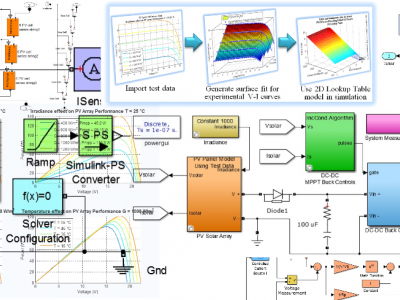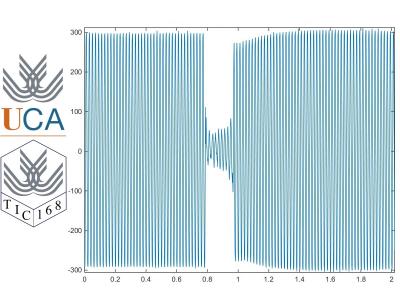Power and Energy
The work starts with a short overview of grid requirements for photovoltaic (PV) systems and control structures of grid-connected PV power systems. Advanced control strategies for PV power systems are presented next, to enhance the integration of this technology. The aim of this work is to investigate the response of the three-phase PV systems during symmetrical and asymmetrical grid faults.
- Categories:
 7744 Views
7744 ViewsThe distributed generation, along with the deregulation of the Smart Grid, have created a great concern on Power Quality (PQ), as it has a direct impact on utilities and customers, as well as effects on the sinusoidal signal of the power line. The a priori unknown features of the distributed energy resources (DER) introduce non-linear behaviours in loads associated to a variety of PQ disturbances.
- Categories:
 6424 Views
6424 Views
In high renewable energy sources penetrated multiple microgrids (MMGs), conventional fast timescale load frequency control (LFC) and slow timescale economic dispatch become much less economically efficient. In this paper, the economy-oriented LFC problem of nonlinear MMGs is framed and a distributed optimal disturbance rejection control method is proposed to address this problem. In particular, this method has excellent anti-disturbance capability in dealing with power imbalances, critical parameter variations, and measurement noises.
- Categories:
 33 Views
33 ViewsThe 54-bus distribution system provided in this dataset is based on the data provided in [1] and was developed in the line of research first reported in [2]. This dataset was used in the paper yet to be published, where we developed a model that can plan a distribution system considering wildfire-prone climate conditions. The model can make smart decisions about line investments and grid topology to reduce line failure probability and possible wildfires ignited by those failures.
- Categories:
 128 Views
128 ViewsThe goal of the Smart* project is to optimize home energy consumption. Available here is a wide variety of data collected from three real homes, including electrical (usage and generation), environmental (e.g., temperature and humidity), and operational (e.g., wall switch events). Also available is minute-level electricity usage data from 400+ anonymous homes.
- Categories:
 350 Views
350 Views
This is the dataset of the paper: A Non-Invasive Circuit Breaker Arc Duration Measurement Method with Improved Robustness Based on Vibration–Sound Fusion and Convolutional Neural Network (https://doi.org/10.3390/en16186551). Here is the abstract of the paper. Previous studies have shown that the contact wear estimation of circuit breakers can be based on the accumulative arc duration. However, one problem that remains unresolved is how to reliably measure the arc duration.
- Categories:
 82 Views
82 Views
Energy-storage-equipped static synchronous compensators (E-STATCOM) are crucial devices in a modern
power grid to regulate both the active and reactive power, thereby improving the efficiency and power
quality. Current controllers commonly used with E-STATCOM devices include proportional-integral (PI),
repetitive, and deadbeat controllers. However, each has application-dependent restrictions and therefore lack
the ability to achieve optimal operation. This paper presents a novel hybrid current controller that combines
- Categories:
 101 Views
101 Views
This dataset includes corona discharge images under AC, + DC, and - DC voltages. To generate corona discharge, three types of electrodes were used. These are the conical rod - plane, the hemispherical rod - plane, and the hemispherical rod - hemispherical rod. One electrode was connected to the high voltage, and the other was connected to the ground potential. A digital single-lens reflex (DLSR) camera was used to capture corona discharge images from corona inception to the gap breakdown.
- Categories:
 79 Views
79 Views




